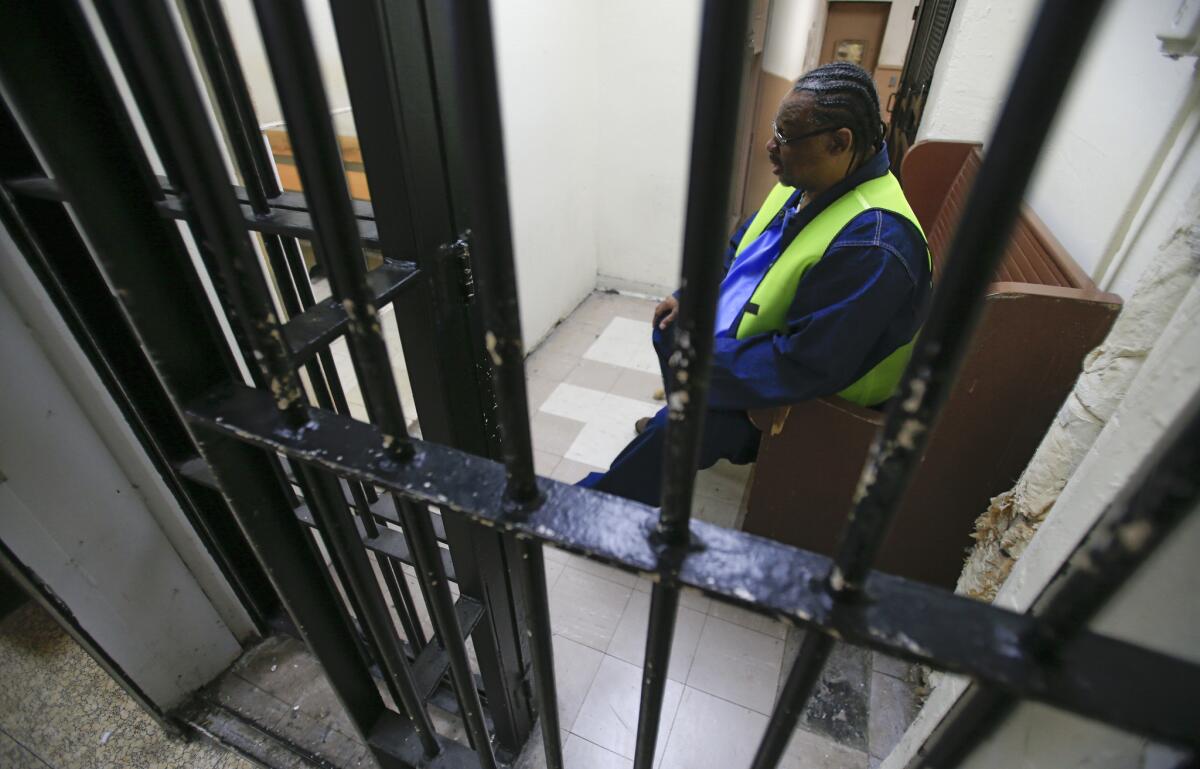Officials unveil controversial guidelines for the release of more inmates to relieve prison overcrowding

- Share via
Reporting from Sacramento — California corrections officials on Friday unveiled new regulations that will increase the chances of early release for hundreds of state prison inmates, and expand the credits they earn for demonstrating good behavior and completing rehabilitation programs behind bars.
The highly anticipated — and hotly contested — guidelines are the first major step toward overhauling the state’s prison parole system under Proposition 57, the ballot measure approved by voters last year that aims to reduce the statewide prison population by 9,500 inmates over the next four years.
In a conference call Friday, Scott Kernan, secretary of the California Department of Corrections and Rehabilitation, echoed Gov. Jerry Brown’s words on the measure, calling the new law “a durable solution” for prison overcrowding and part of the state’s response to a federal court-ordered cap on the state inmate population.
But he also emphasized the need to create opportunities that improve the chances for inmates to leave prison and keep them from coming back.
“Through rehabilitation, we are creating hope in our prisons by giving inmates the opportunity to change and acquire skills and tools to be productive members of our society once they leave prison,” he later said in a statement.
Proposition 57 gave new power to the state parole board to grant early release to prisoners whose primary sentences are for crimes not designated as “violent” under California law. It also provides new ways for those inmates to earn time credits toward their sentences if they enroll in certain programs.
The pool of inmates newly eligible for parole — about 1,200 offenders — is expected to expand by more than 500 over the next fiscal year, Kernan said Friday. Early projections show more than 1,500 inmates could be eligible for early release by 2021.
Under the regulations, inmates will be able to trim their sentences up to six months for earning a high school diploma or college degree, and up to a month each year for successfully completing self-help programs — such as substance abuse support groups, counseling and parenting or anger management classes.
They will also have the chance to earn greater “milestone” credits, awarded for achieving certain goals in certain rehabilitation programs, allowing them to potentially reduce their sentences by up to 12 weeks in a yearlong period.
But the regulations could face scrutiny from law enforcement officials and prosecutors who have opposed the measure from the start. They have argued its incentives should not be extended to sex offenders or those serving life sentences. The debate has spurred several lawmakers to introduce legislation that would expand the state’s list of violent crimes.
The regulations unveiled on Friday exclude only death row inmates and those who are serving life without the possibility of parole from the credit earnings. Violent offenders could receive up to 20% of time served for good behavior, up from 15% in previous guidelines.
Voters say yes to Proposition 57, Gov. Jerry Brown’s push to loosen prison parole rules »
The rules are expected to receive final approval in the fall after a public comment period. If they win initial approval from state regulators, changes to the credit system will begin as early as May, while the parole eligibility changes will take effect in July.
Probation officials and criminal justice advocates lauded the effort on Friday. In a statement, Mary Butler, president of the Chief Probation Officers of California, called the rules “fair and consistent with the mission of Prop 57.”
“The voters spoke clearly in Prop. 57 that they want true rehabilitation in our prison system, and in order to have true rehabilitation we must ensure a balance of incentives and sanctions in any regulations that are permanently adopted,” she said.
Twitter: @jazmineulloa
ALSO:
Governor’s budget gives a glimpse into challenges ahead for prison parole overhaul in California
What is a ‘violent crime’? For California’s new parole law, the definition is murky— and it matters
Why Gov. Jerry Brown is staking so much on overhauling prison parole
Updates on California politics
More to Read
Get the L.A. Times Politics newsletter
Deeply reported insights into legislation, politics and policy from Sacramento, Washington and beyond. In your inbox three times per week.
You may occasionally receive promotional content from the Los Angeles Times.










